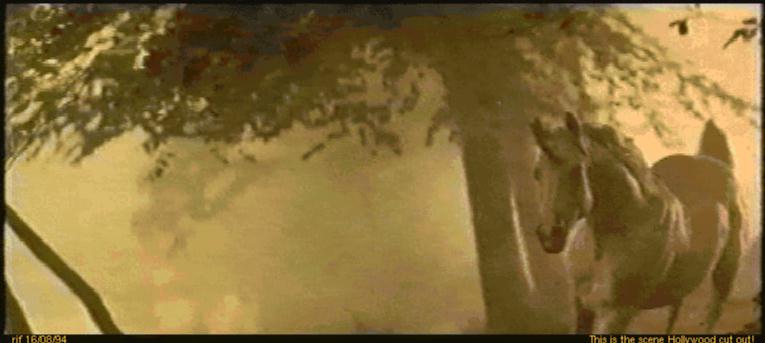Blade Runner / Unicorn
What is the Significance of the Unicorn?
When Deckard leaves his apartment with Rachael at the end of the film, she
knocks over an origami unicorn. The unicorn is the last of a series of
origami figures that Gaff uses to taunt Deckard. In Bryant's office when
Deckard insists he's retired, Gaff folds a chicken: You're afraid to do it.
Later he makes a man with an erection: You're attracted to her. And
finally, the unicorn: You're dreaming, you can run away with her, but she
won't live (he says something equivalent to Deckard on the rooftop).
One interpretation is that the unicorn was simply a message to Deckard to say
I know you've got Rachael, but I'll let her live. Another interpretation
(based on the script) is that the unicorn is Gaff's gauntlet and he will hunt
them both down.
A unicorn has long been the symbol of virginity and purity (being white),
which ties in with Rachael's status. Legend states that only a virgin could
capture a unicorn. Unicorns are extinct, and Gaff may think the same of
Rachael, as she definitely has a limited lifespan.
Shigeki Hayashi has provided instructions on how to make an origami unicorn.
A unicorn was used in
Tennessee Williams'
The Glass Menagerie to symbolize
that the girl was "different to other horses". The horn on this unicorn
represented her physical handicap, which prevented her from meeting people.
When she finally did meet a man, they danced and knocked over the unicorn,
breaking its horn off. "It's just like all the other horses now," she said,
which symbolizes that she has overcome her shyness and lost her virginity.
The unicorn may also symbolize:

BRDC includes a scene not in the original release. It is a dream
sequence, showing Deckard's dream of a white unicorn. One can now argue Gaff
knew that Deckard had dreamt of a unicorn. If Gaff knew what Deckard was
dreaming, then we can assume that
Deckard was a replicant himself, and Gaff
knew he would be dreaming of a unicorn just the way Deckard knew about the
spider outside Rachael's window.
From The Blade Cuts, an interview with Ridley Scott:
Scott: ...did you see the version [of the script] with the unicorn?
McKenzie: No...
S: I think the idea of the unicorn was a terrific idea...
M: The obvious inference is that Deckard is a replicant himself.
S: Sure. To me it's entirely logical, particularly when you are doing a
film noire, you may as well go right through with that theme, and the
central character could in fact be what he is chasing...
M: Did you actually shoot the sequence in the glade with the unicorn?
S: Absolutely. It was cut into the picture, and I think it worked
wonderfully. Deckard was sitting, playing the piano rather badly
because he was drunk, and there's a moment where he gets absorbed
and goes off a little at a tangent and we went into the shot of the
unicorn plunging out of the forest. It's not subliminal, but it's a
brief shot. Cut back to Deckard and there's absolutely no reaction
to that, and he just carries on with the scene. That's where the
whole idea of the character of Gaff with his origami figures -- the
chicken and the little stick-figure man, so the origami figure of the
unicorn tells you that Gaff has been there. One of the layers of the
film has been talking about private thoughts and memories, so how
would Gaff have known that a private thought of Deckard was of a
unicorn? That's why Deckard shook his head like that [referring to
Deckard nodding his head after picking up the paper unicorn]."
Scott goes on to talk about how he decided to make the photograph of the
little girl with her mother come alive for a second, then later in the
interview we have:
M: Are you disappointed that the references to Deckard being a replicant
are no longer there?
S: The innuendo is still there. The French get it immediately! I
think it's interesting that he could be.
Scott intended the unicorn scene to be in the
1982 theatrical release, but
the producers vetoed the idea as "too arty".

Murray Chapman

